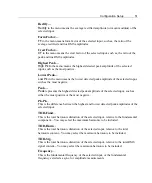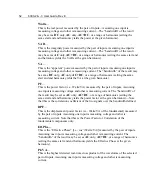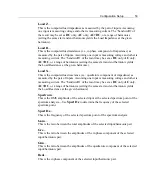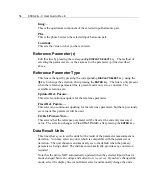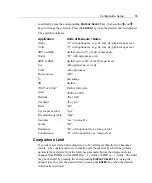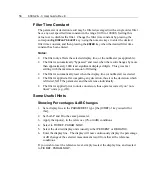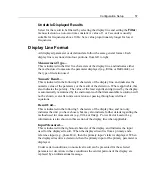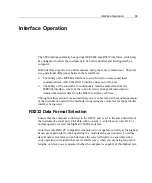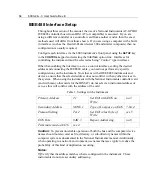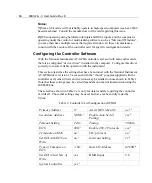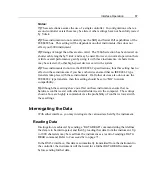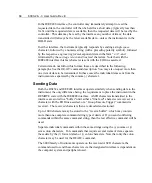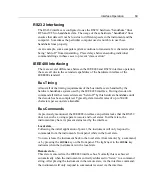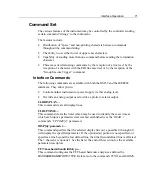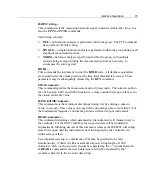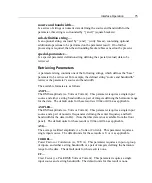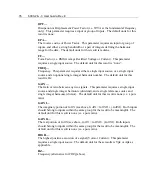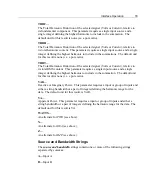
Interface Operation
65
2)
The only command that may hold the bus handshake for longer than 20mS is the
device clear
command. If this command is not used, then even shorter timeout
periods can be used to detect a failure. The
device clear
command may hold the bus
handshake for up to one second. When using the command
pass-through
feature of
the MIB (i.e. controlling another instrument via the MIB), longer timeout periods
may be required.
3)
These instruments always send a carriage return (0DH) and a line feed (0AH)
with EOI asserted at the end of each data transfer.
4)
Terminating a data read with the defined EOS byte ensures that data transfers are
correctly terminated. This ensures that you do not have to specify the exact number
of characters for each transfer. Data transfers from these instruments are all 7-bit
ASCII data with no parity.
5)
These instruments will terminate a data receive operation with either a line feed
character (0AH), or any character with EOI asserted, or with a device trigger.
Selecting the EOI w/last byte of “Write” option ensures the shortest possible data
transfer.
6)
These instruments do not “unaddress” at the completion of a transfer. Thus,
assuming no other device has been subsequently addressed, there is generally no
requirement to re-address the instrument. However, if the instrument is locally reset
to the local state then it must be re-addressed to reenter the remote state.
Configuring the Controller Card
Follow the manufacturer’s recommended installation procedure when installing the
card in the computer. Note that when installing an IBM PC (i.e., 8-bit) card into an
IBM AT type machine (i.e. 16-bit or higher), take particular note of the hardware
interrupt and DMA input selected for the card.
Most manufacturers of these cards set these parameters to those compatible with the
IBM PC, unfortunately these usually conflict with other cards normally found in the
IBM AT class computers. Be aware that the first parallel port in an IBM AT class
computer uses interrupt IRQ7.
When a conflict occurs between interrupts and DMA inputs, the problems may not
appear for some time, or may only cause intermittent operation. The recommended
action when any doubt occurs is to first deselect the DMA input, and secondly—if
the problem persists—deselect the IRQ. Although this will perform slightly slower
than the published specifications for the card, this will ensure that no conflicts occur.
Summary of Contents for Xitron 6000-2
Page 1: ...USER S GUIDE 6000 2 6000 3 Phase Angle Voltmeters...
Page 2: ......
Page 36: ...36 6000 2 3 User Guide Rev E...
Page 86: ...86 6000 2 3 User Guide Rev E...
Page 94: ...94 6000 2 3 User Guide Rev E...
Page 101: ...Appendix B 101...

